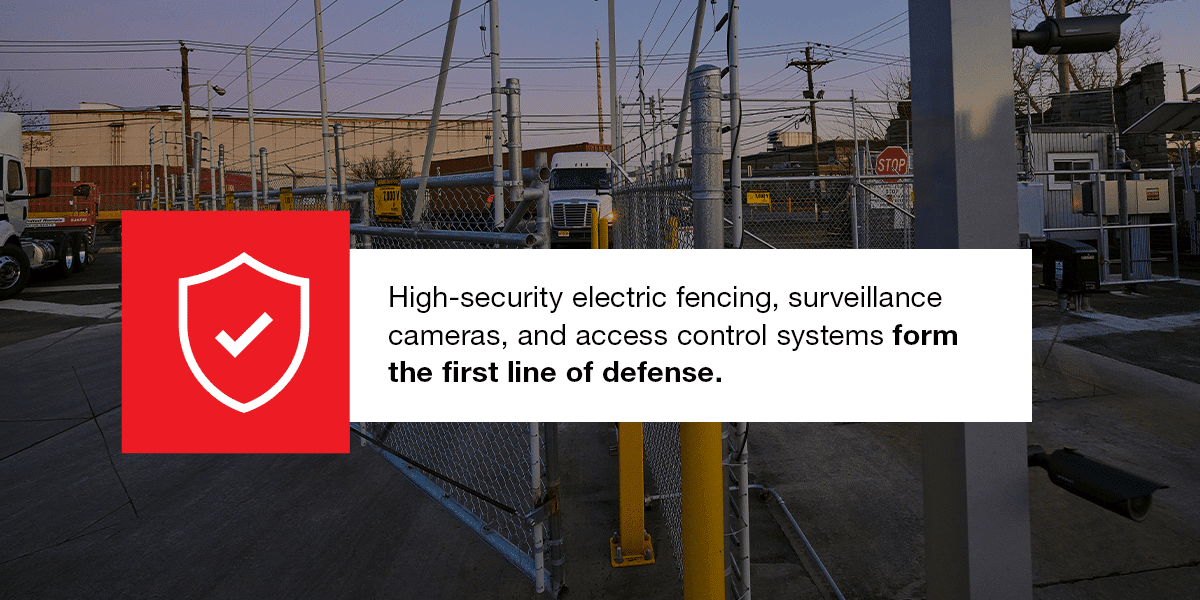Multi-site businesses face complex security risks that require a strategic, standardized approach. Without uniform perimeter security, vulnerabilities multiply, increasing exposure to theft, vandalism, and unauthorized access. Implementing consistent security strengthens defenses, helps ensure regulatory compliance, and reduces operational disruptions.
A well-designed perimeter security strategy integrates physical barriers, access controls, and surveillance to protect assets and personnel. Businesses must enforce a defense system that adapts to evolving threats, deterring thieves while maintaining seamless operations.
Security Challenges for Multi-Site Businesses
Managing perimeter security across multiple locations presents significant challenges. Each site may have different layouts, risk levels, and local regulations, complicating security enforcement. Inconsistent security protocols can create weak points that thieves exploit, and solely relying on remote management adds complexity, requiring real-time monitoring and rapid response capabilities. Additionally, integrating new technologies with legacy systems can be costly and time-consuming if you do not partner with the right service provider.
Why Security Standards Matter
Setting clear perimeter security standards is important when you run or own a business with multiple locations. This type of proactivity helps you assess all potential threats or risks at each site or location, ensuring you can set up effective security systems. Establishing standards is crucial for several reasons:
- Protects assets and information: Corporations deal with valuable assets, sensitive information, and proprietary data. Security standards help safeguard these assets from theft, unauthorized access, and other threats.
- Mitigates risks and threats: By implementing proactive measures, corporations can mitigate the impact of security incidents and reduce the likelihood of property crime, theft, and cyberattacks.
- Keeps you compliant with regulations: Many industries, such as construction, are subject to strict security regulations and compliance requirements. Security standards can help you meet these obligations to avoid legal consequences and fines.
- Safeguards reputation: Adhering to security standards demonstrates a commitment to protecting customer trust and can help reduce the negative impact of potential security incidents on brand reputation.
- Ensures business continuity: By identifying and addressing potential vulnerabilities, corporations can minimize the risk of disruptions and maintain continuity even in the face of unexpected events or crises.
- Prevents financial loss: Security standards help prevent financial losses by proactively addressing vulnerabilities and minimizing the impact of security incidents.
- Enhances employee productivity: Security standards provide guidelines and measures that create a secure workplace, reducing distractions and concerns related to security threats.
- Facilitates partnerships and collaborations: Establishing security standards can be a prerequisite for partnerships, as it ensures that all parties involved adhere to common security practices.

How to Create and Establish a Strong Security Standard
To create an effective plan, your business should consider taking a proactive and strategic approach and ensure that each location is trained in the process. Balancing protection with operational efficiency is critical, and a standardized security approach minimizes strain on budgets and personnel. Businesses must prioritize consistency, visibility, and efficacy in their security solutions. Here are a few recommendations to begin establishing perimeter security for multiple locations’ standards in your business:
Step 1: Complete Risk Assessments and Define Objectives
The first step in creating a security standard is to complete a risk assessment for each location. Identifying potential threats and vulnerabilities is crucial in determining overall security needs.
During your assessments, your team should evaluate the impact and likelihood of various security risks for each site. You can obtain a local crime report for each location and check for weak spots, blind spots, poorly lit areas, and heavy vegetation.
In addition to physical security, assessing your cybersecurity is important. Your most critical data should have the highest level of protection. Work with your IT team to rank your online data and accounts from most to least critical to your business’s operation.
Once your team compiles all the reports, you need to analyze them to define your objectives. Then, your team should prioritize those objectives based on the potential impacts of the identified risks.
Step 2: Create and Establish Security Policies
Security for multi-site businesses should follow a security standard while being flexible based on each location’s risk factors. Develop security policies covering key areas such as access control, data protection, physical security, and incident response.
Employee training and regular security audits are key to protecting your business. Whether we like it or not, employees come and go, properties change over time, and criminals get smarter. Training and retraining your employees on your security protocols and completing yearly security audits is imperative.
For additional peace of mind, your company should have an established plan in place in case an incident occurs. Standardized security policies and emergency response plans (ERP) help ensure consistency across all sites.
Step 3: Identify and Implement Security Solutions
Once you have assessed and prioritized your risks and established your top security objectives, you need to find the right physical security solutions for each location. Your strongest and most cost-effective option is to secure each location’s perimeter. Consider installing an electric fence to prevent criminals from entering your premises. High-security electric fencing and alarm-based lighting also work together to deter unauthorized entry. Clear signage reinforces these security policies and boundaries across sites.
How to Protect Multi-Site Businesses
A layered security system mitigates risks by combining physical, technological, and procedural controls. Advanced monitoring tools, including AI-driven analytics and building intrusion detection systems, evaluate events in real time to identify potential threats and organize the appropriate response. More elements to add to each site’s security layers include:
- Gate access control, including keycard systems and biometric authentication.
- Automated alerts that notify security teams of attempted breaches, such as alarm systems, cameras, and lighting.
- Employee training to reinforce security awareness across worksites, reducing human error and the potential for insider threats.
- Centralized control centers to enable swift responses.
AMAROK Is Here to Help
A standardized, layered approach to multi-site perimeter security is critical for businesses with various locations. By integrating physical barriers, advanced technology, and strong policies, organizations can safeguard assets, ensure regulatory compliance, and maintain operational continuity. Consistency and adaptability are key to mitigating evolving security threats.
Whether you are running one site or many, AMAROK’s solutions form the heart of a strong, layered physical security approach. We will conduct a free threat assessment of all your properties and offer turnkey solutions to keep your assets protected. AMAROK customers save an average of $120,000 annually by switching from 24/7 security guards to our systems.
Download our guide to learn more about the importance of being proactive rather than reactive in business security.






